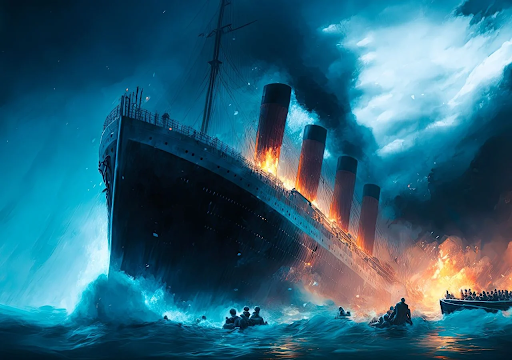
The Titanic was a wonder of its time, launched on March 31, 1911, approximately 100,000 people gathered at the Belfast dock to watch the grand Royal Mail Ship (RMS) Titanic, a ship publicized as “unsinkable.” This gigantic cruise ship, estimated over 882 feet long, equal to four city blocks, and 175 feet tall, weighed more than 46,000 tons. It was furnished with modern technology, including a refined electrical control panel, four elevators, and an innovative wireless communication system able to transmit Morse Code. Regardless of its luxury and engineering advancements, the Titanic’s first voyage would be its last.
The Construction of Titanic
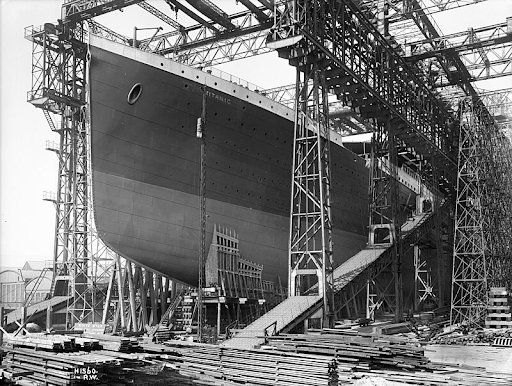
The creation of the RMS Titanic resulted from an intense race among transportation enterprises in the early 20th century. The White Star Line, specifically, was in a rivalry with Cunard, another well-known British shipping company that blustered two wonderful vessels—the Mauretania and the Lusitania. The Mauretania set a transpacific speed record in 1907, while the Lusitania was famous for its opulent interiors. Unfortunately, the Lusitania met its end in 1915 when a German U-boat torpedoed the ship, directing the United States’ entry into World War I.
In the same period that Cunard revealed its superb ships, J. Bruce Ismay, the chief executive of the White Star Line, joined conferences with William J. Pirrie, the head of the shipbuilding company Harland and Wolff, to manufacture three enormous ships recognized as the “Olympic” class. The Titanic was the second ship in this class, and its construction began in March 1909 at the Harland and Wolff shipyard in Belfast, Ireland. The massive hull, which became the biggest man-made moveable object in the world.
In the coming years, billions of laborers thoroughly built the ship’s decks, constructed its splendid interiors, and established the 29 massive boilers that controlled its two primary steam engines.
Titanic’s First Journey
Titanic’s first voyage commenced on April 10, 1912, leaving from Southampton, England, with stays in Cherbourg, France, and Queenstown (now Cobh), Ireland, before being put out to sail for New York with 2,240 people on board. The passengers contained high-ranking officials, industrialists, dignitaries, and celebrities. Prominent figures on board included J. Bruce Ismay, Thomas Andrews (the ship’s builder), John Jacob Astor IV and his young wife Madeleine, Isidor and Ida Straus, Benjamin Guggenheim, and the well-known “Unsinkable Molly Brown.” While the ship’s stars settled the First Class, most o f the ship’s workers,with intellectuals, tourists, and journalists, traveled in the Second Class. The majority of passengers, over 700 individuals, were in the Third Class, conveying the primary source of profit for the White Star Line.
Tragedy Strikes: The Sinking of the Titanic
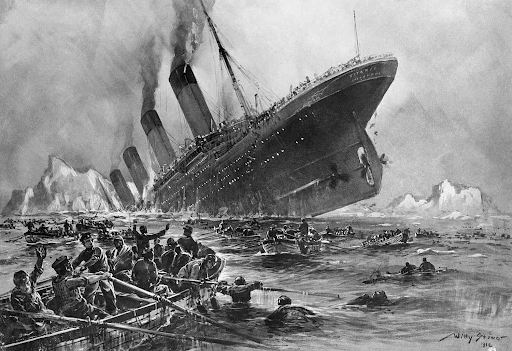
Just four days after leaving Southampton, England, on its journey to New York, tragedy struck on the night of April 14, 1912, as the Titanic struck with an iceberg off the shore of Newfoundland and eventually sank.
This fatal tragedy asserted the lives of more than 1,500 out of the 2,240 travelers and crew on board. The story of the Titanic has since become a warning about the effects of human pride, preserved in numerous books, articles, and films, including the iconic 1997 movie starring Kate Winslet and Leonardo DiCaprio.
Several abnormal events were noticed before departure, including the finding of a coal fire in one of its bunkers, which the crew thought to be controllable. Some experts suppose that this fire became unmanageable, causing the ship to sustain high speed and making it incapable of preventing the iceberg.
The warden spotted the iceberg, and the ship tried to avoid it but collapsed the iceberg, forming a huge underwater crack. The ship’s captain and chief designer, Thomas Andrews, estimated the deterioration and assessed that the Titanic might remain floating for about an hour and a half, leading to the order to load the lifeboats.
The excretion was full of disorganization and confusion because lifeboats for departing were insufficient. The ship kept floating for almost three hours, causing acts of both cowardice and heroism. As Titanic’s curve sank under the ocean’s surface around 2:20 a.m. on April 15, 1912, Cunard’s Carpathia, which had received Titanic’s trouble call and directed through icebergs over the night, arrived to rescue the survivors.
Factors Behind the Fatal Tragedy
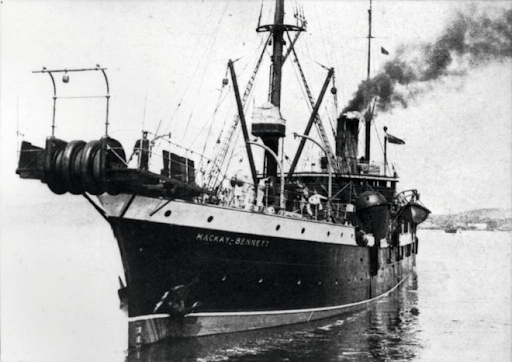
More than a century later, experts continue to debate the multiple factors that contributed to the sinking of this iconic ship. While various theories have emerged, it is generally agreed that a combination of circumstances played a role in the demise of the supposedly unsinkable Titanic.
Regardless of being acclaimed as practically “unsinkable” due to its double bottom and 15 watertight partition chambers with electric waterproof doors, the Titanic had critical design faults. While the compartments were indeed waterproof, the walls dividing them did not expand adequately above the waterline This let water to flow from one compartment, particularly when the ship tilted.
Another lethal mistake was that not enough lifeboats on board were available to accommodate 1,178 people, although the Titanic might bear over 3,300 travelers and crew. Even if the lifeboats were fully loaded during an emergency elimination, they could only adjust one-third of those on board.
Some other key contributing factors include:
Excessive Speed
Some condemned the Titanic’s captain, E.J. Smith, for sailing the gigantic ship at a high speed of 22 knots through iceberg-laden waters, probably surpassing the crossing time of its sister ship, the Olympic. However, some experts recommend that attempts to manage a coal bunker fire may have affected the ship’s speed.
Ignored Iceberg Warning
The close-by ship Californian had alerted the Titanic about the existence of dense field ice less than an hour before the crash. However, the alarm did not handle the prefix “MSG” (Master’s Service Gram), which would have needed direct recognition from the captain. Therefore, the Titanic’s radio operator, Jack Phillips, believed the message was non-urgent and did not transmit it.
Navigation Error
According to Louise Patten, the descendant of the most senior surviving Titanic officer, Charles Lightoller, a crewmember may have made a critical mistake when trying to escape the iceberg. Due to the chaos between two separate direction order systems used at the time, the ship diverted in the wrong direction, directly into the path of the iceberg.
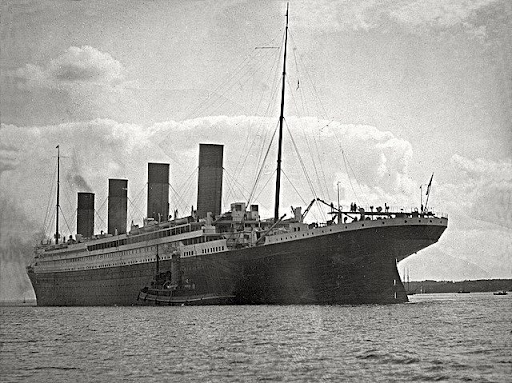
Faulty Bolts
Examining the wreck in 1985, it was disclosed that the Titanic had not sunk undamaged but had broken aside on the ocean’s surface. Some materials scientists blame the quality of the over 3 million bolts maintaining the hull’s steel plates jointly, which included a high engagement of “slag,” weakening the hull and causing it to crack upon impact with the iceberg.
Atmospheric Conditions
Studies executed around the Titanic’s 100th anniversary in 2012 indicated that distinctive gravitational forces and atmospheric conditions may have acted as a catalyst. These circumstances increased the level of floating ice in the North Atlantic, probably contributing to the disaster.
Lack of Binoculars
Second Officer David Blair, who held the key to the Titanic’s binoculars, left the ship before its first voyage and forgot to hand over the key to his substitute. This deficiency of binoculars may have hindered the guardian’s ability to spot the iceberg in time.
Insufficient Lifeboats
Despite the causes of the sinking, a major loss of lives could have been avoided if the Titanic had maintained a sufficient number of lifeboats. However, the ship went with only 20 lifeboats, the legal minimum, leaving over 1,500 people without a seat in a lifeboat.
These factors, combined provide insights into the complex events that contributed to the terrible sinking of the Titanic, a tragedy that remains to capture the world’s imagination.





